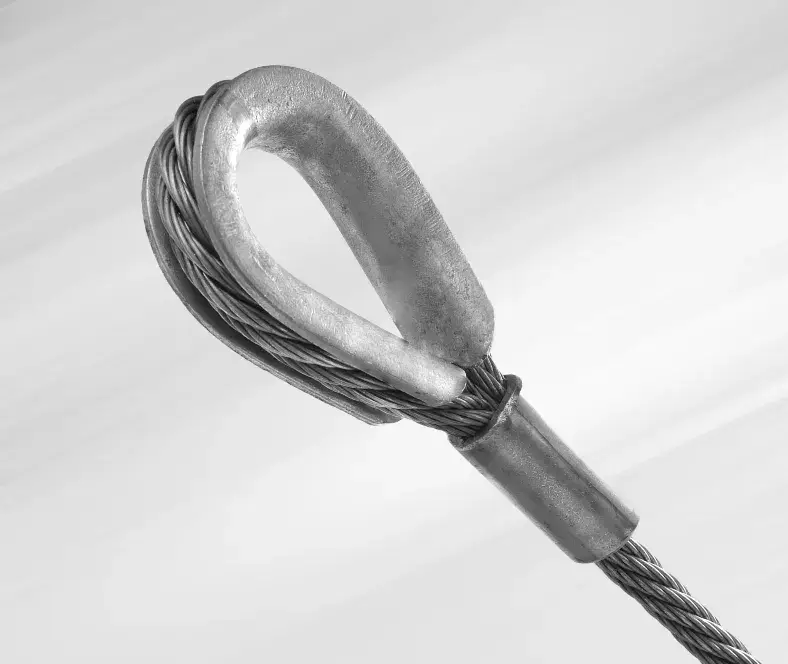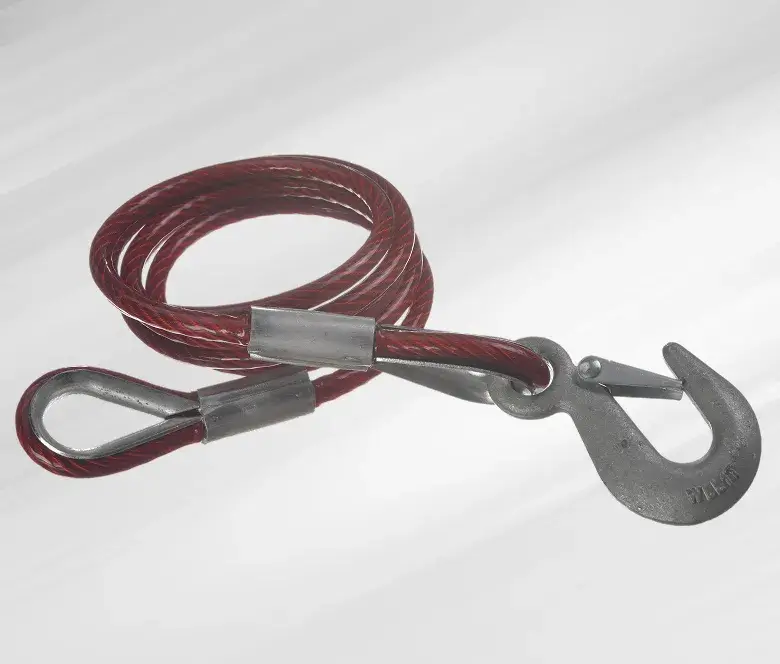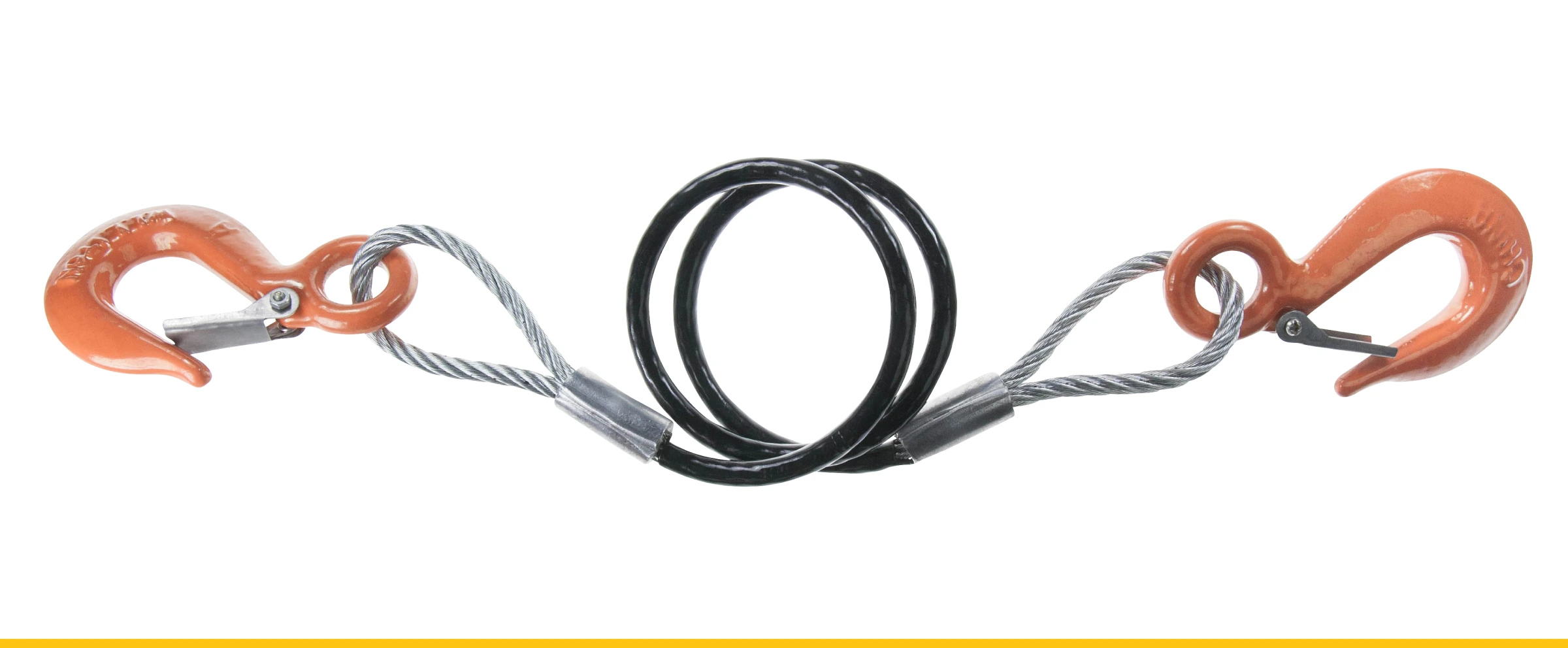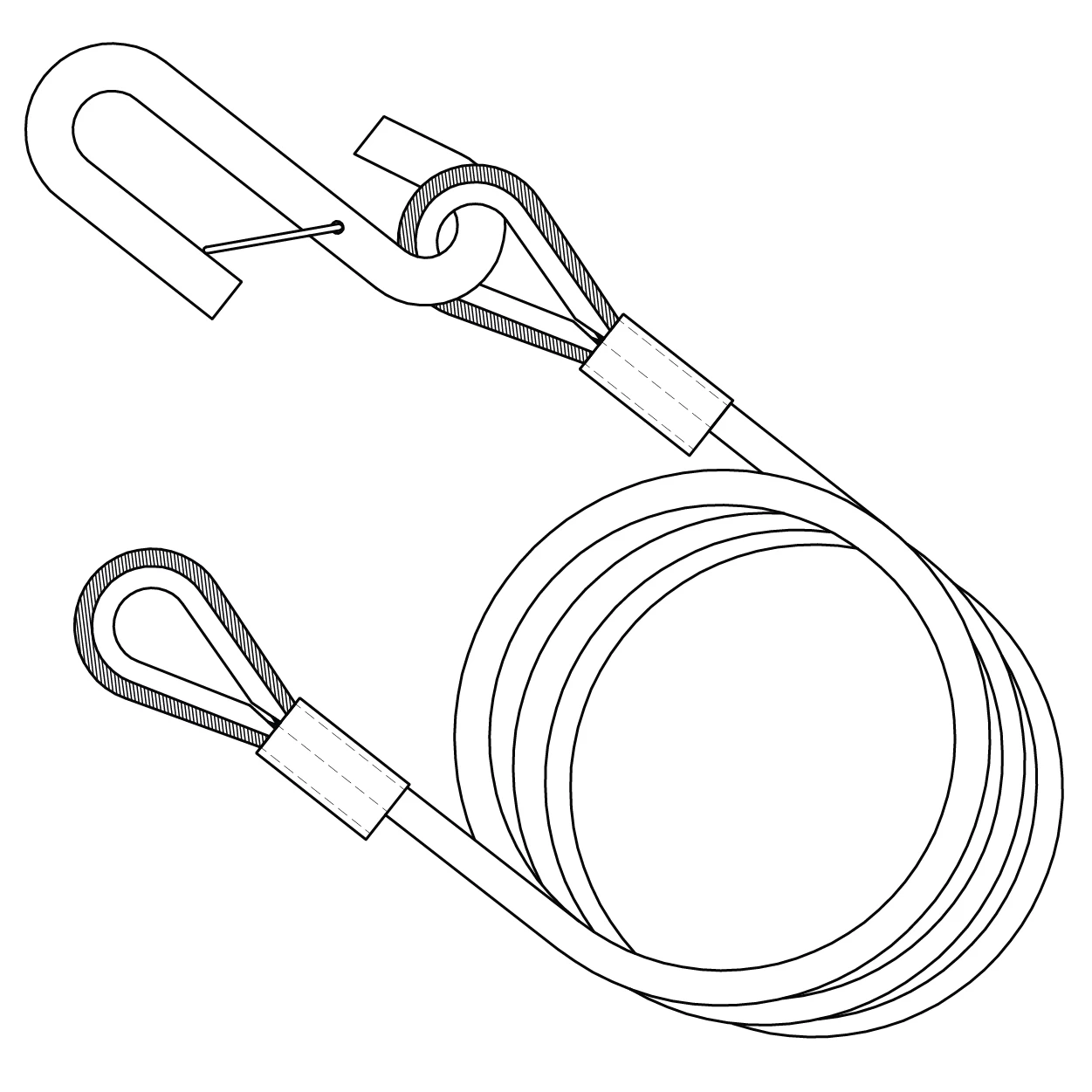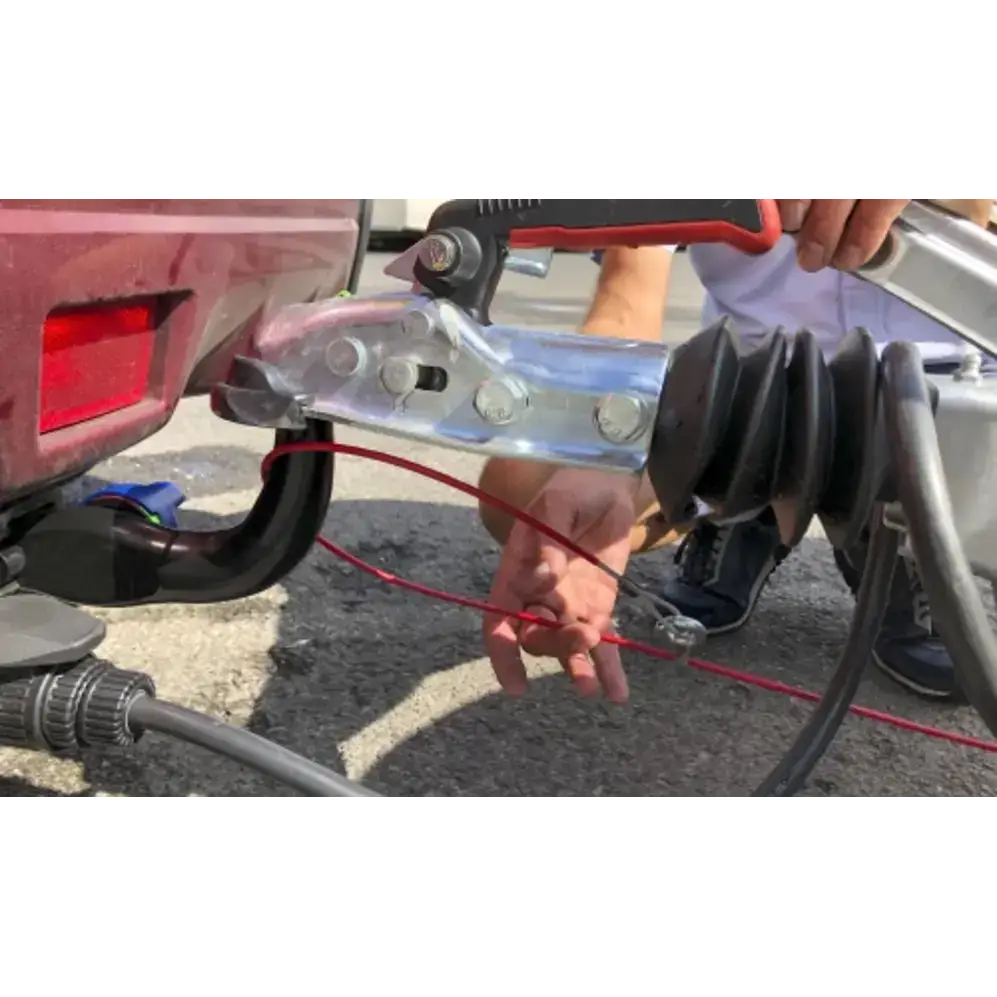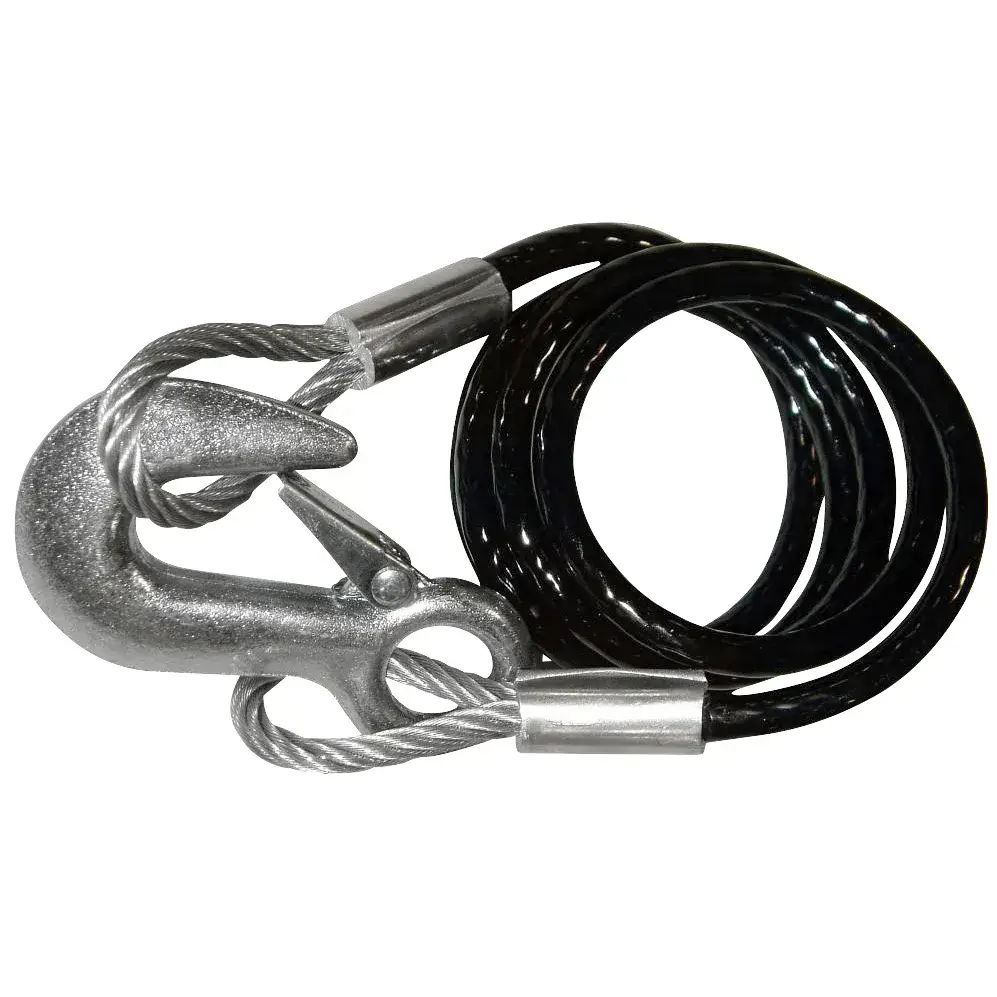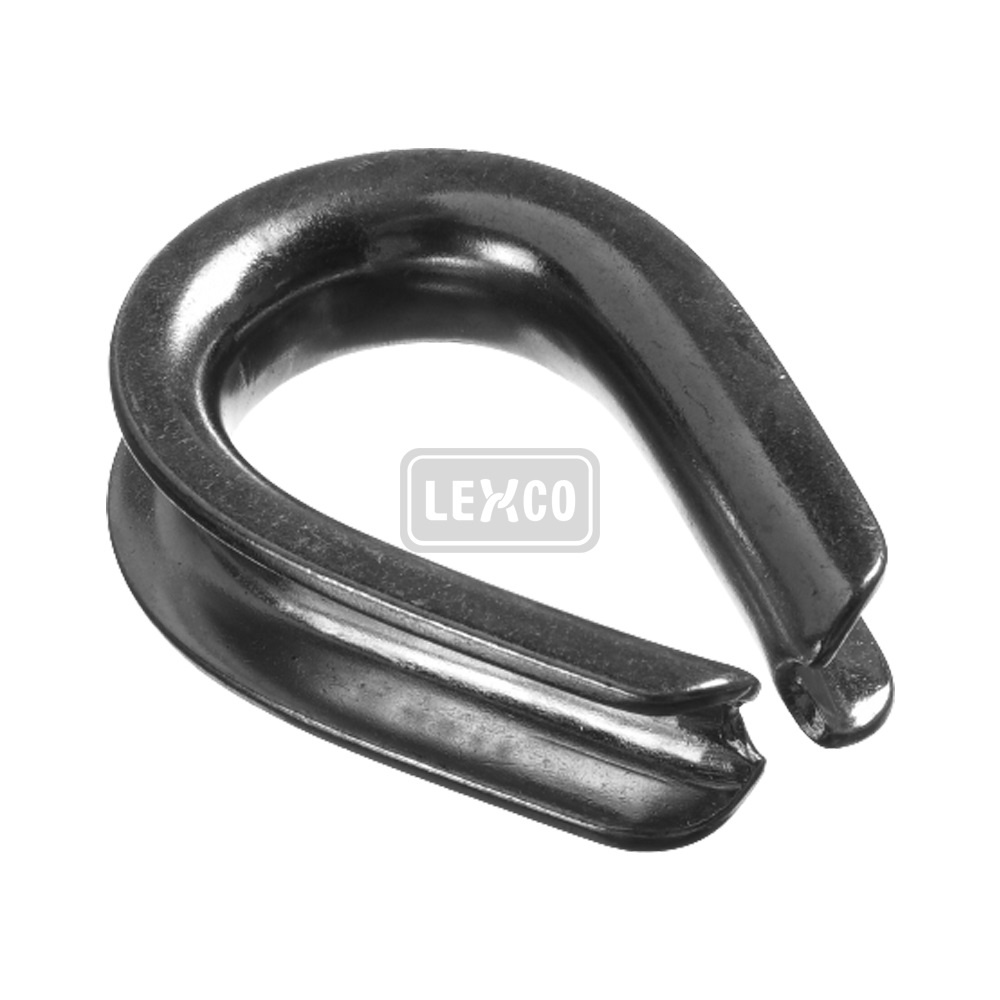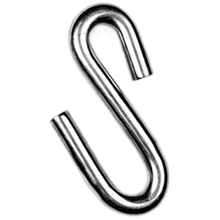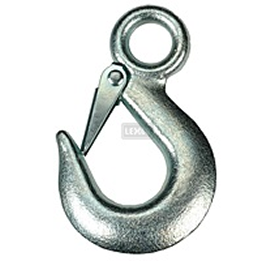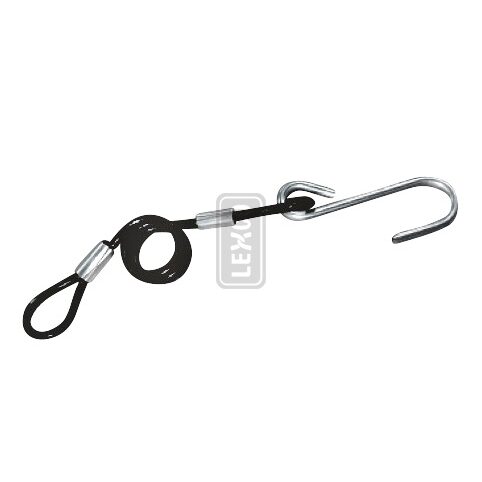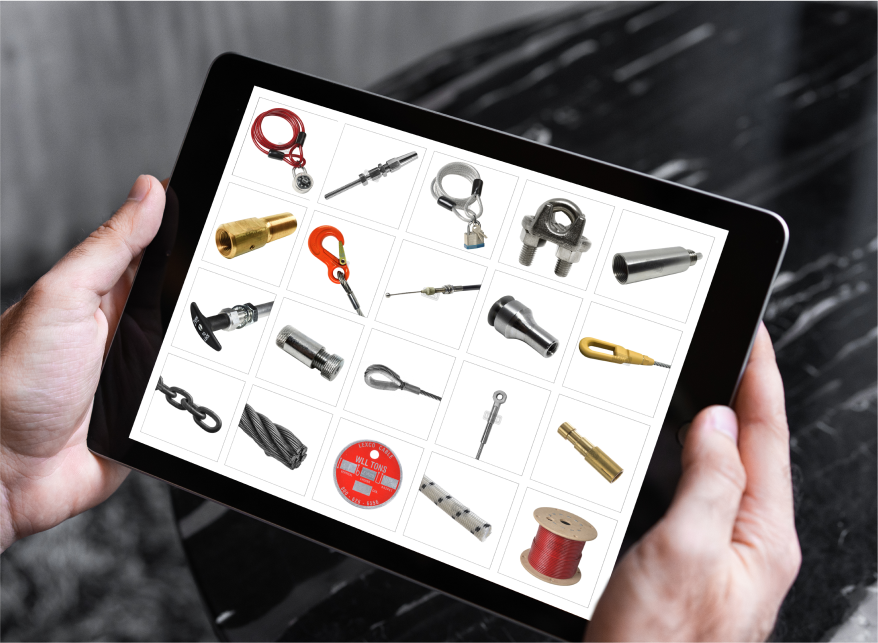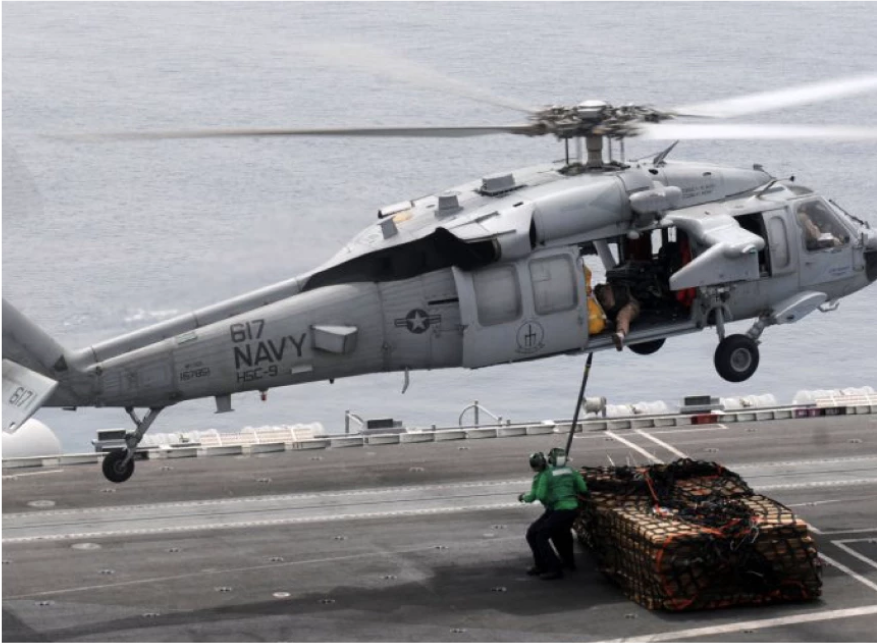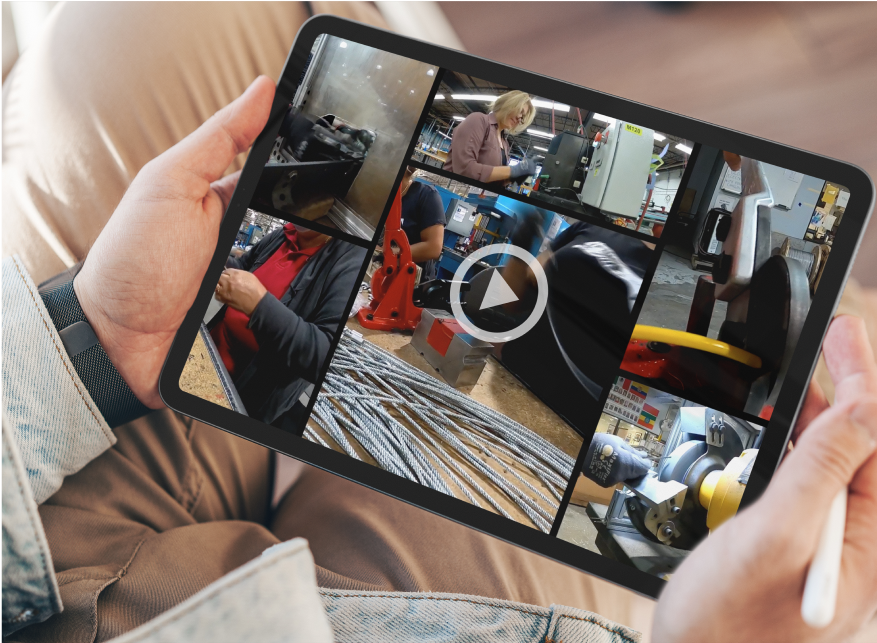What are the Best Cable Assemblies for Trailers?
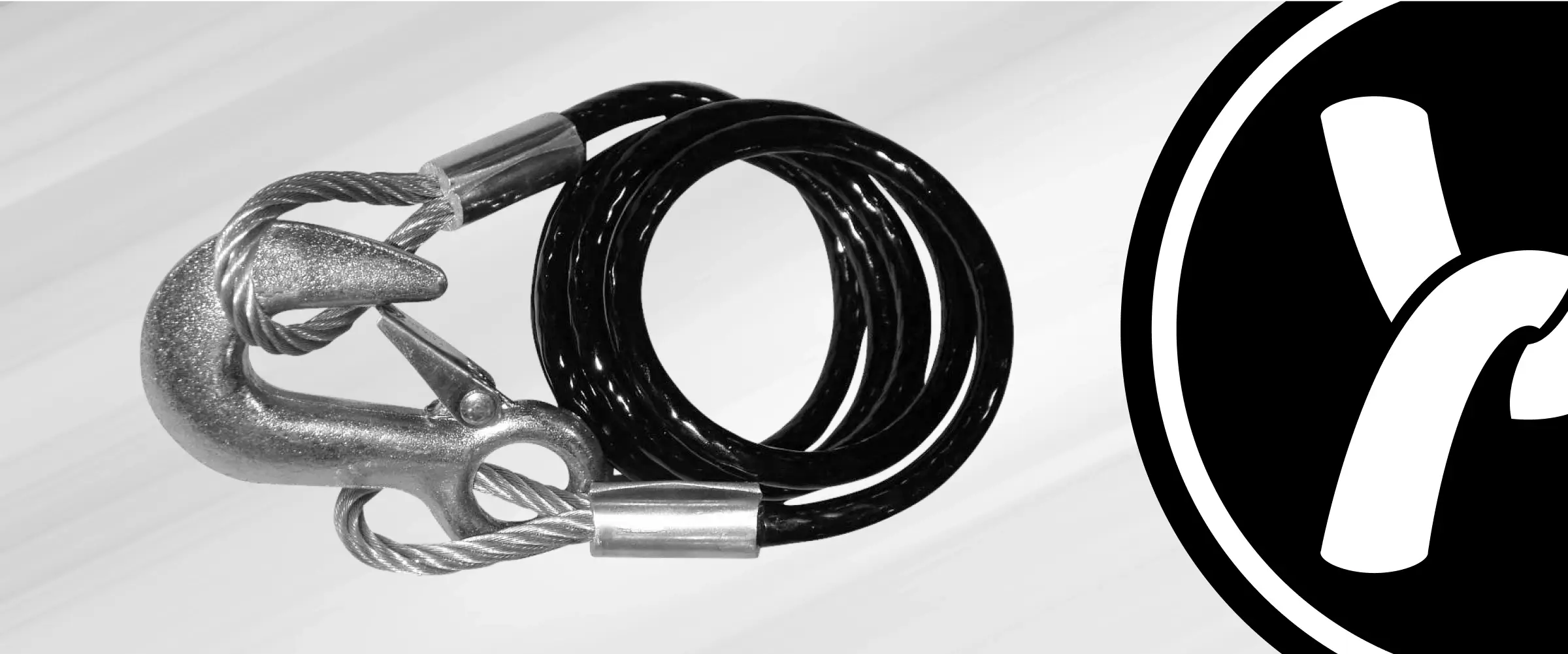
What are the Best Cable Assemblies for Trailers?
Any truck using a non-flexible hitch connection outside of 5th wheels needs towing safety cables or chains. Towing safety cables and chains act as emergency connections to avoid disaster should the trailer become disconnected from the truck. Ensuring a proper emergency connection system is critical for all towing applications.
This article builds on the basics of wire rope assemblies for towing, and will focus on:
What Manufacturers Need to Know About Trailer Safety Cable Assemblies
Wire rope
Wire ropes are the core of trailer safety cable assemblies. Wire ropes are defined by the number of strands, the number of wires per strand, the material, and the diameter. Here is a common wire rope construction and its benefits.
- 7×19: This cable has 7 strands and 19 wires per strand. This aircraft cable design is primarily flexible and resists deformation much better than other constructions.
| 7X19 AIRCRAFT CABLE FOR TRAILER SAFETY APPLICATIONS | ||||
|---|---|---|---|---|
| Diameter | Galvanized | SS304 | ||
| MBS (LBS) | WLL | MBS (LBS) | WLL | |
| 3/32 | 1,000 | 200 | 1,000 | 200 |
| 1/8 | 2,000 | 400 | 1,760 | 352 |
| 3/16 | 4,200 | 840 | 3,700 | 740 |
| 1/4 | 7,000 | 1,400 | 6,400 | 1,280 |
| 5/16 | 9,800 | 1,960 | 9,000 | 1,800 |
| 3/8 | 14,400 | 2,880 | 12,000 | 2,400 |
| WLL is based on 5:1 Safety Factor | ||||
Fittings and Hardware
Fittings and hardware are equally important to the functionality of a cable as the rope itself, acting as critical connection points. They must be adequately sized and rated to match the cable’s strength, ensuring secure connections and effective tension transmission, especially in emergencies.
The following is a list of typical end fittings for trailer safety cables:
- Thimble Loop: A simple loop of wire wrapped around a rigid thimble that protects the inside of the loop.
- Thimble with S-Hook: A thimble that is hooked to one end of an S-hook. They are useful for quick connections.
- Thimble with Latched S-Hook: A latched S-hook is more secure by preventing the S-hook from slipping off.
- Thimble with Eye Hoist Hook: An eye-hoist hook, whether latched or not, is much heavier-duty than a standard S-hook.
Unlike ropes that are usually bound with a knot, wire ropes are often terminated with crimps or sleeves that secure the fitting in place.
Coatings and Coils
Towing safety cables are commonly coated in a flexible nylon or plastic sleeve that forms a non-corroding air barrier that protects the cable from rust and water damage. Cables can also be pre-coiled, allowing a long flexible cable to be shortened without dangling.
How to Choose a Trailer Safety Cable Assembly
When considering what trailer safety cable to buy for your specific towing application, there are five key factors to evaluate:
- Strength: The strength of a cable is defined primarily through the Minimum Breaking Strength (MBS). The MBS is the highest weight a cable can withstand before it begins to risk breaking. As a general rule of thumb, a towing cable’s MBS should be well above the gross weight of the trailer and its potential contents.
| TRAILER CLASS STRENGTH | ||
|---|---|---|
| Working Load Limit (lbs.) | Minimum Ultimate Tensile (lbs.) | Class of Trailer |
| 750 | 3,000 | No. 1 |
| 875 | 3,500 | No. 2 |
| 1,250 | 5,000 | No. 3 |
| 1,900 | 7,600 | No. 4 |
- Construction and Flexibility: Flexible cables like 7×19 are key for applications where the truck is going to be performing a lot of sharp turns or where high speeds are expected. Long cables allow for maneuverability and prevent a runaway trailer from quickly pulling the truck and potentially overturning it.
- Corrosion Resistance and Coating: Galvanized and plated cables use a metallic coating that is less susceptible to corrosion to protect the steel below from exposure to air. Plastic coatings are the same, but using plastic instead of metal. They are critically necessary for any applications prone to corrosion (e.g., marine environments).
- Length and Routing: Towing safety cables should be long enough to have a good amount of slack even when the trailer is turned to its maximum angle, thus preventing wear on the cable during regular turns. Coiling of the cable can prevent the slack from getting in the way or dragging during transit. Remember that cables should be routed to avoid contact with moving parts, so consider that when determining the required cable length.
Remember to consider regulatory and manufacturer guidance after determining your required specs.
How to Choose Trailer Cable Assemblies for Different Uses
- Breakaway for Utility Trailers: For average truck drivers, usually dealing with low to medium weights and hauling a variety of loads. It requires a flexible cable with a thimble loop connected to a latched s-hook for a balance of ease and strength.
- Tow Bars: Provide a secure, stable connection between a towing vehicle and its trailer. They help maintain proper alignment and load distribution during transit.
- Heavy Equipment: For commercial applications like construction and military use. Requires heavy-duty cables with lug-style or latched eye-hoist hooks.
- Enclosed Cargo/Car Haulers: Requires coiled cables and thimble loops with latch hooks to prevent dragging and wear on long-haul travel around lots of moving parts.
- Surge-Brake and Surge-Axle Trailers: Surge brakes engage mechanically when the trailer separates. Requires stronger cables that resist the dynamic loads when the surge brakes engage.
Remember, while some assemblies can be used for multiple applications, not all assemblies are appropriate in all applications (e.g. never substitute an S-hook when a stronger eye hoist hook is required for expected loads).

Why Choose Lexco for Trailer Safety Cables
Towing safety cables are defined by their wire rope construction, end fittings, coatings, and application-specific requirements. When choosing cable assemblies for trailers, key factors include Minimum Breaking Strength (MBS), flexibility, corrosion resistance, cable length, and routing. Recommendations vary by trailer type, and Lexco offers custom assemblies built to exact specifications.
Lexco Cable makes custom assemblies for a variety of wire rope applications, including towing safety cables. We make orders to spec, and they offer a wide range of assemblies, materials, coatings, fittings, and treatments to customize the product to the customer’s needs. Learn more about Lexco’s product offerings for trailer safety cables by visiting our website now.
Key Takeaways:
- It’s important to choose the right wire rope construction for your application (7×19).
- End fittings matter as much as the rope, so pick thimble loops, latched S-hooks, or eye-hoist hooks based on required security and load.
- Coatings and pre-coiling prevent corrosion, water damage, and dragging, which is critical for marine and long-haul use.
- Specify Minimum Breaking Strength well above the trailer’s gross weight, and plan cable length and routing to avoid wear and interference.
- Match assemblies to application needs such as flexible thimble-latch setups for utility trailers and heavy-duty hooks for construction or surge-brake trailers


